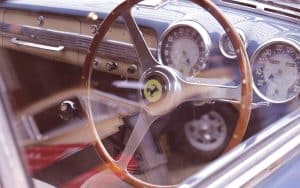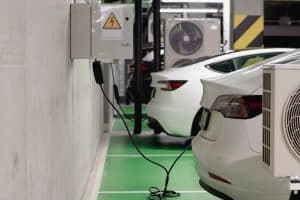Electric Car Conversions Give Classics New Life
Electric cars have been making a splash in the automotive industry. With their eco-friendliness and cost-effective operation, more and more drivers are considering making the switch to an electric vehicle. While new electric cars are a great option, what about those classic cars that hold a special place in our hearts? Thanks to electric car conversions, these cherished vehicles can now have a new life as environmentally-friendly and efficient cars. This innovative process merges the nostalgia of classic cars with the modern technology of electric cars. Let’s delve deeper into the world of electric car conversions and how they are giving classics a new lease on life.
The Basics of Electric Car Conversions
Before we dive into the benefits of electric car conversions, it’s essential to understand what the process entails. Electric car conversions involve taking a gasoline-powered vehicle and replacing its internal combustion engine with an electric motor. The batteries for the new electric motor are typically installed in the trunk of the car. The process also includes adding a charging port and all the necessary wiring and components to power the electric motor.
The Benefits of Electric Car Conversions
The most significant advantage of an electric car conversion is the environmental impact. Electric cars emit zero emissions, making them an excellent option for those looking to reduce their carbon footprint. By converting classic cars to electric, we are giving these vehicles a new life without contributing to air pollution. Additionally, electric cars are highly energy-efficient, resulting in lower fuel costs and long-term savings.
Another perk of electric car conversions is their low maintenance costs. Electric motors have fewer moving parts than traditional engines, meaning less wear and tear and fewer repairs. This translates to lower maintenance costs, saving classic car owners money in the long run.
The Ease of Electric Car Conversions
One of the most significant concerns for classic car owners considering an electric conversion is the possibility of compromising their vehicle’s originality and character. However, electric car conversions are designed to be reversible, meaning the classic car can be restored to its original state if desired. Additionally, most conversion kits are made to fit specific car models, making the installation process more straightforward and less time-consuming.
Moreover, electric car conversions allow classic car owners to retain their vehicle’s original design and character while enjoying the benefits of modern technology. The electric motor is smaller than a traditional engine, providing more space in the engine bay for other components, making it possible to keep the car’s original appearance. This way, classic car enthusiasts can continue to enjoy their vehicle’s nostalgia while also being eco-friendly.
Electric Car Conversions: A Step Towards a Sustainable Future
With the ever-increasing concern over climate change and the urgency to reduce carbon emissions, electric car conversions offer a sustainable solution. By giving classic cars a new life as electric cars, we can preserve the beloved designs of the past while contributing to a cleaner and greener future. Additionally, as technology continues to advance, electric car conversions are becoming more affordable and readily available, making them a viable option for more classic car owners.
Conclusion
Electric car conversions are not only transforming classic cars into eco-friendly vehicles but also preserving their nostalgia. With benefits such as lower maintenance costs, energy efficiency, and the ability to reverse the conversion, electric car conversions are an attractive option for classic car owners. As we continue to move towards a sustainable future, electric car conversions are a step in the right direction, giving classics a new life and helping to reduce our carbon footprint in the process.











